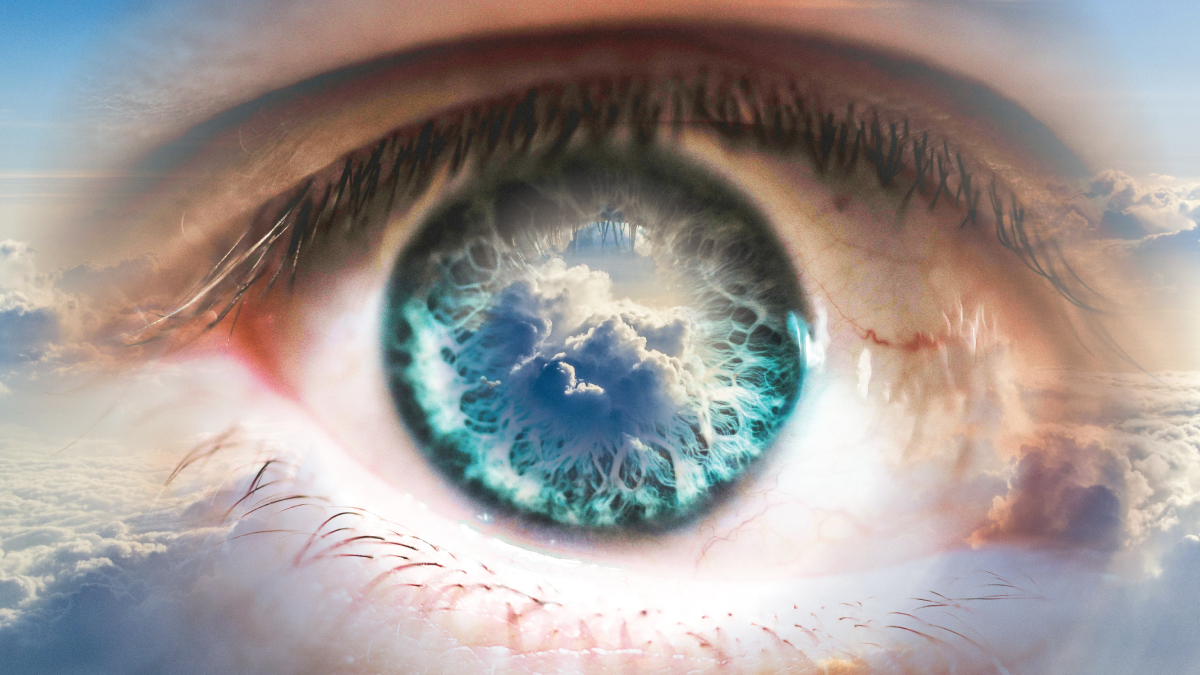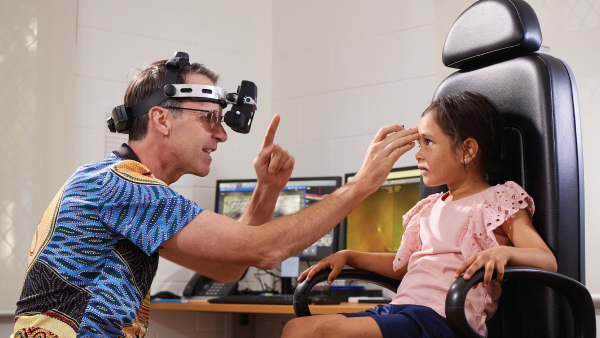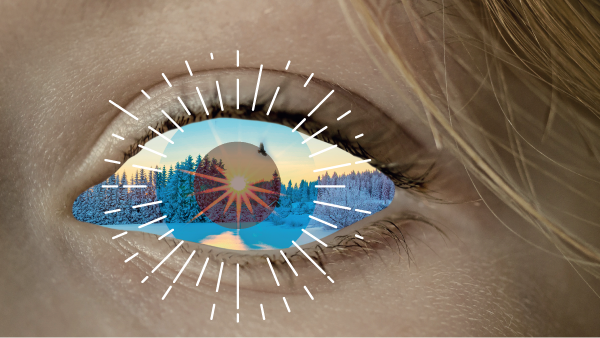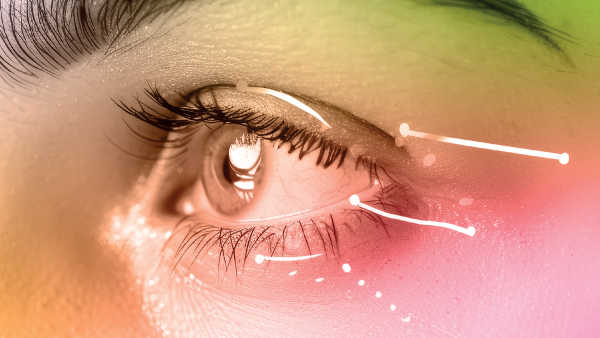The “And Finally…” Archivist – Part 3
Recent newsletter items that caught our eyes, piqued our interest, or tickled our fancies
Readers of The New Optometrist’s weekly newsletter will be aware of our “And Finally…” entries, where we take a look at some of the quirkier eye-related news, opinions, and research in our field of vision.
For those of you who may have missed them, or fancy a light-hearted moment in your busy week, here’s another round-up of some recent gems for your delectation.
Pools of blue
If you’ve got blue eyes, “your blue eyes aren’t really blue.”
So explains Dan T. Gudgel, writing on the American Academy of Ophthalmology website.
He goes on, “Eye color depends on the iris, which is made up of two layers. For almost everyone – even people with blue eyes – the back layer (called the pigment epithelium) has brown pigment in it. The front layer of the iris (the stroma) can make eyes appear brown, hazel, blue or green. People with blue eyes have no pigment at all in this front layer…”
Gudgel adds that blue eyes “get their color the same way water and the sky get their blue color – by scattering light so that more blue light reflects back out.”
So – all that physics and anatomy notwithstanding – it looks like the poets and artists who centuries ago were equating blue eyes with azure skies and deep, inviting pools were onto something…
Khan scan first in the can
Being a film buff, I tend to like most of what director Ridley Scott does; however, I’ve never been a great fan of Blade Runner (1982). This may sound sacrilegious to some, but I’ve always found the film dull and overlong. And what is it with all those subsequent Special Editions, Director’s Cuts, Final Cuts, Security Guard’s Cuts, Receptionist’s Cuts …? Why didn’t they get it right the first time?
That said, Blade Runner is not short on innovative visuals and ideas, and I was interested to read that it was one of the earliest films to depict iris recognition technology, which is used in the movie’s “future society” (set in 2019!) of assimilated androids to determine who is human and who is not.
But in terms of “eye-fi,” Scott’s ambitious opus was pipped to the post by a more crowd pleasing bit of hokum – Star Trek II: The Wrath of Khan (1982). This space sequel, which sees Captain Kirk undergo a retina scan to access top secret files, boldly made it to the big screen two weeks before Blade Runner.
Keeping focus as an older driver
By 2030, more than 90% of men over 70 will still be driving their cars, and by 2035 there will be 21 million older drivers on UK roads.
Older drivers have fewer crashes than younger ones, but the AA reminds us that “as we age our reaction time slows down, our eyesight tends to get worse, and age-related conditions and medications can affect driving.” The organization is therefore urging motorists aged 70 and over to tell the DVLA about conditions such as glaucoma that might affect their ability to drive safely. But “as long as your health is still good and there are no other reasons for you to stop driving, there’s no legal reason that you can’t drive at 90 years old in the UK,” the AA goes on. It also lists some of the best cars for the older driver, one being – fittingly – the Ford Focus.
Spring into (eye safety) action!
As we can now safely say that spring, if not quite summer, has arrived, you might think we’re going to remind you about the need for sunglasses. Think again!
Malcolm Maciver, an academic and optometrist at Leightons Opticians, has “highlighted and warned the public” about the risks to eyes of six activities that we tend to take up in the finer weather. Read on…
1. Bike riding. Cycling “can expose your eyes to dust, pollen and UV rays from the sun which could cause eye irritation. That’s why it’s important to wear UV-protective sunglasses that offer impact-resistant lenses, providing an extra layer of defense against flying debris or accidental knocks during sports or activities,” says Maciver.
Sound advice!
2. Gardening and lawn mowing. “Wearing safety glasses when gardening or mowing the lawn is highly recommended to protect your eyesight," says Maciver. "Flying debris such as rocks, twigs or even plant fragments can pose a serious threat to your eyes."
As someone too lazy to rake over the lawn before mowing it, I can vouch for this threat.
3. Lighting and cooking on a BBQ. When lighting the BBQ, sparks and hot debris can fly and can cause burns or serious eye injury. "Even once the BBQ is lit, safety eyewear is highly recommended whilst cooking, especially with spicy foods such as chillies or onions."
I’ve never yet goggled-up for a cook-out, but you can’t be too careful…
4. DIY home projects and renovations. Interest in home renovation peaks during the summer months, says Maciver. "Common DIY tasks, such as woodworking, drilling or sanding, can create flying particles that pose a risk and irritation. Additionally, hammering, sawing, or painting can pose a potential risk to your eyes from flying debris, dust, or splashes of paint getting into our eyes…”
5. Jump-starting a car. As temperatures rise "the likelihood of cars overheating and potentially breaking down increases," says Maciver. “If you’re faced with a car with a dead battery and need to jump start it, it’s essential to wear safety goggles when starting the car due to the potential hazards associated with battery acid or sparks.”
6. Spring cleaning. “Wearing safety eyewear during spring cleaning is highly recommended as using cleaning solutions can result in accidental splashes or exposure to irritating fumes. Without protection, these chemicals and substances can splash into contact with the eyes, causing irritation or burning.”
Unfortunately, my home cleaning regimen is not thorough enough for me to encounter these dangers… Nonetheless, thanks to Malcolm Maciver for venturing to keep us “spring safe!”
The New Optometrist Newsletter
Permission Statement
By opting-in, you agree to receive email communications from The New Optometrist. You will stay up-to-date with optometry content, news, events and sponsors information.
You can view our privacy policy here
Sign up to The New Optometrist Updates
Permission Statement
By opting-in, you agree to receive email communications from The New Optometrist. You will stay up-to-date with optometry content, news, events and sponsors information.
You can view our privacy policy here
Sign up to The New Optometrist Updates
Permission Statement
By opting-in, you agree to receive email communications from The New Optometrist. You will stay up-to-date with optometry content, news, events and sponsors information.
You can view our privacy policy here







